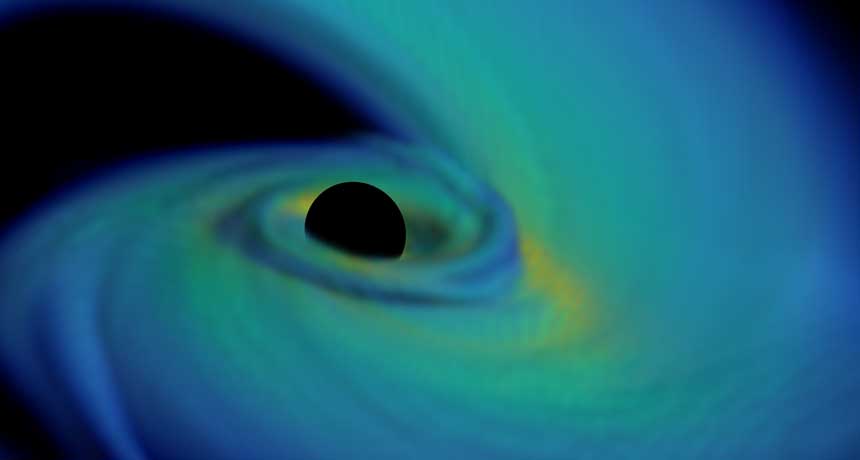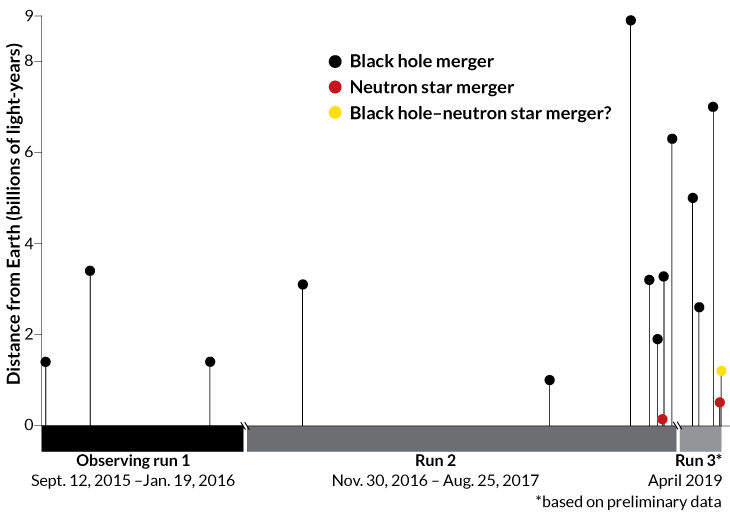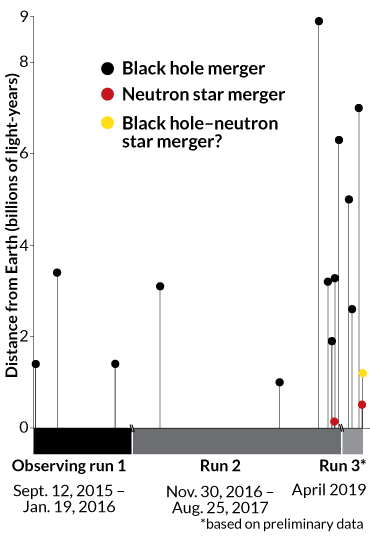LIGO and Virgo made 5 likely gravitational wave detections in a month
Spacetime ripples came from colliding black holes, neutron stars and maybe a new kind of event

NEW TYPE? Scientists from the LIGO and Virgo experiments may have spotted spacetime ripples from a brand new source: a neutron star melding with a black hole (illustrated in a computer simulation).
F. Foucart/UNH and SXS Collaboration/Classical and Quantum Gravity 2017









